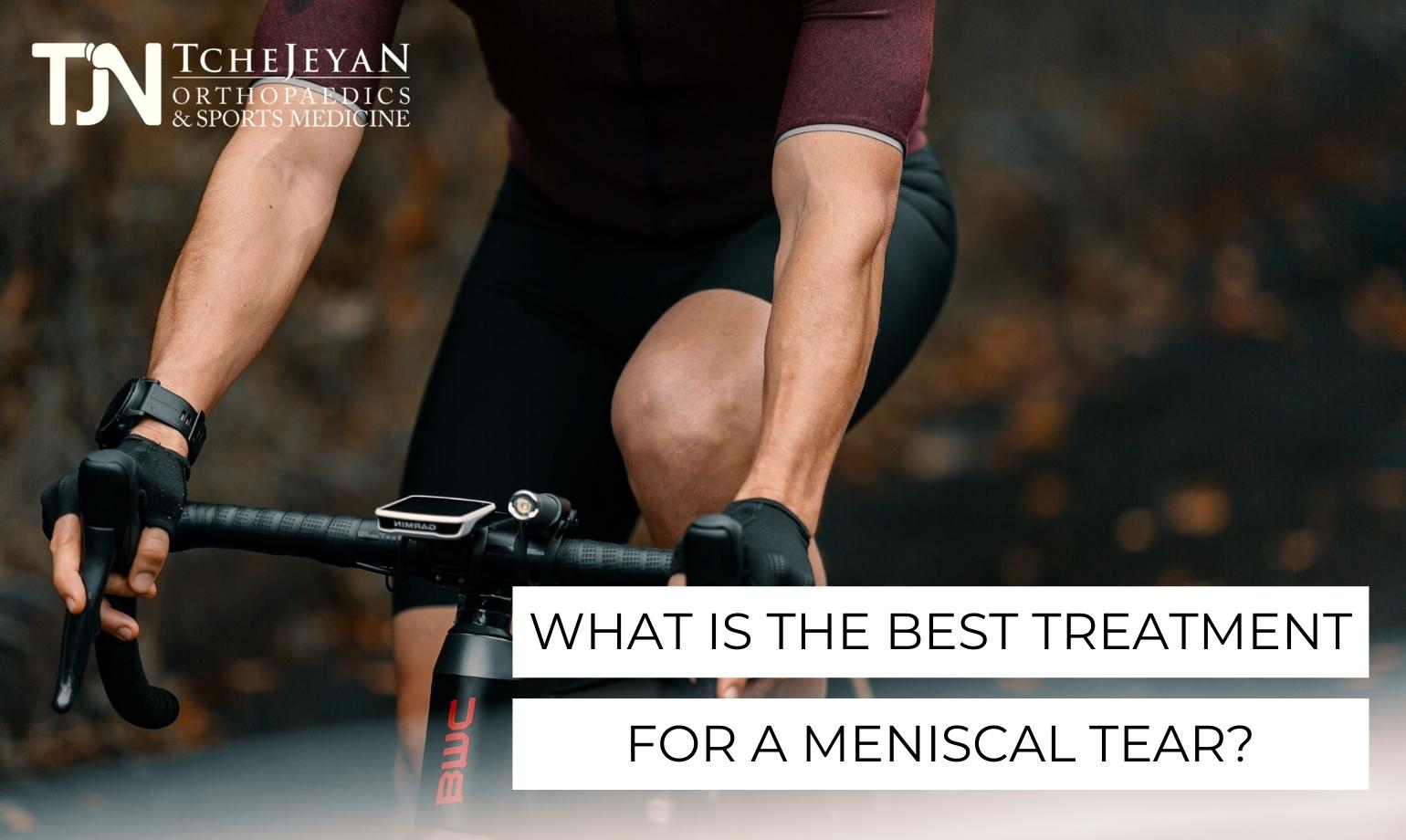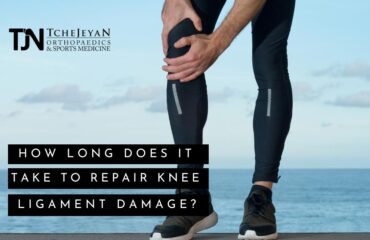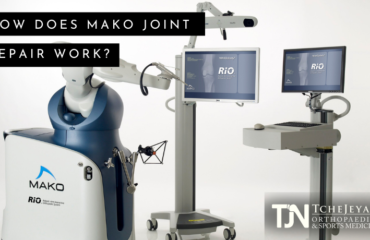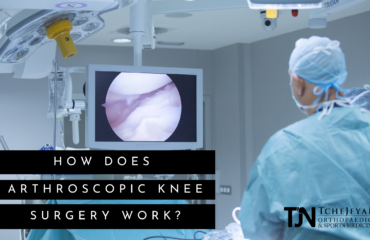Knees are your largest joints, and every day, since the moment you learned to walk, they have had to bear a lot of stress. Even just standing, your knees have to support almost all of your body weight, and when you walk, run, and jump, your knees have to sustain tremendous impact. Given these facts, it’s no wonder that knees are highly susceptible to injury. This is especially true for people who lead active, athletic lifestyles, but it is also true for elderly people, whose knees suffer from a lifetime of accumulated wear and tear.
One fairly common knee injury is a meniscal tear. The meniscus is one of the pieces of cartilage in your knee joint. It is a tough, C-shaped piece that acts as a shock absorber between the shinbone (tibia) and the thighbone (femur). When the meniscus is torn, it can cause your knee to lock up, swell, and feel painful and stiff. Fortunately, this condition usually responds well to medical care. At Tchejeyan Orthopaedics and Sports Medicine, we offer the most advanced treatment options available for a variety of knee injuries, and we have many success stories of patients who have been treated for a torn meniscus.
How Are Meniscal Tears Treated?
There are several ways to treat a torn meniscus, and we can determine the best one for you based on a few diagnostic tests. While a cartilage tear will not show up in an X-ray, having this image can help us rule out other conditions that might be the cause of your knee problem. After the X-ray, we can use MRIs and knee arthroscopy to examine the knee further and, if you do have a torn meniscus, assess the extent and location of the tear. Depending on the outcome of these procedures, here are some treatment options we might recommend for you.
Sports Medicine
Although not specifically a specific treatment, a “sports medicine” approach to a knee injury is designed specifically to enable athletes to get back into action as soon as possible, with minimal impact on their mobility. A torn meniscus is a very common sports injury, particularly in sports like tennis, basketball, and football. Tears often happen as a result of sudden changes of direction that twist the joint. This is especially stressful on the knee because knee joints are designed to bend in only one direction. Sports medicine will emphasize rest, ice, rehabilitation, pain relief, physical therapy, and prevention techniques. For serious tears, orthopedic surgery may be necessary, and rehabilitation will focus on restoring strength and mobility.
Knee Arthroscopy
Knee arthroscopy is a technique in which a thin instrument called an arthroscope is inserted into the knee through a small incision. A camera attached to the arthroscope is used to investigate the extent of the injury. While used for diagnostic purposes, arthroscopy is also a minimally invasive surgical technique. The camera provides the surgeon with a clear view of the surgical site, and other surgical instruments are inserted through additional incisions to repair the tear. Knee arthroscopy offers many benefits over traditional open surgery, allowing doctors to treat the injury without cutting through muscle or tendons to access the site. Because it causes less trauma to the knee, recovery time for arthroscopic surgery is considerably shorter than for traditional surgery.
Rehabilitation
Sometimes knee injuries respond well to non-invasive treatments. For a torn meniscus, if a patient is willing to give the knee enough time to rest without putting any stress on it, the meniscus can repair itself. Pain can be relieved by cortisone shots and anti-inflammatory medications, and healing can be aided by rehabilitative therapy. Depending upon the extent of the tear, you may be able to avoid surgery.
Knee Replacement
For arthritic patients or individuals who have not responded to other treatments, a meniscus transplant or knee replacement may be the best solution. In knee replacement surgery, your doctor will determine whether any parts of the knee can be preserved, or whether total knee replacement is warranted. These procedures are fairly commonplace today, and although the recovery period is fairly long, patients who have had knee replacement can expect the new joint to give them near-natural mobility for up to 20 years and free them from pain.
The goal of any treatment for a torn meniscus, or for any injury, is to relieve your pain, resolve your problem, and restore you to a normal level of activity with minimal recovery time. At Tchejeyan, we provide expert orthopedic care with special emphasis on athletes and others who lead active lifestyles. If you have a knee or other joint injury, contact Tchejayan Orthopedics today to schedule an appointment.




